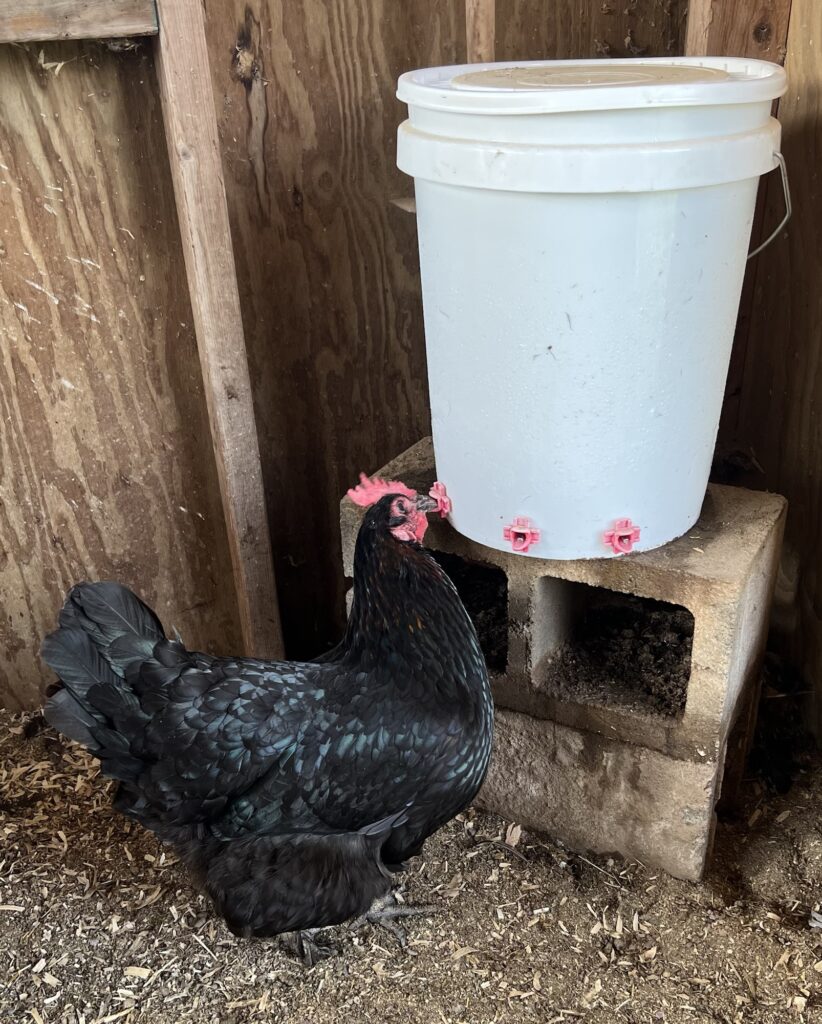
We’ve been suffering the effects of a “heat dome” here for about the past week. Temperatures have been in the 90s during the day (reaching 105F+ with the heat index), and it doesn’t cool off much at night. This makes for dangerously hot weather, for people and animals. We’ve learned some tricks over the years that helps keep our flocks healthy and resilient, and are employing them now.
In a very humid area like this, it doesn’t even have to reach high temperatures before it becomes uncomfortable. When the heat index pushes the “feels like” temperatures to over 100F, it becomes a matter of survival. And our poultry don’t have the option of retreating to an air-conditioned room when it gets oppressively hot outside.
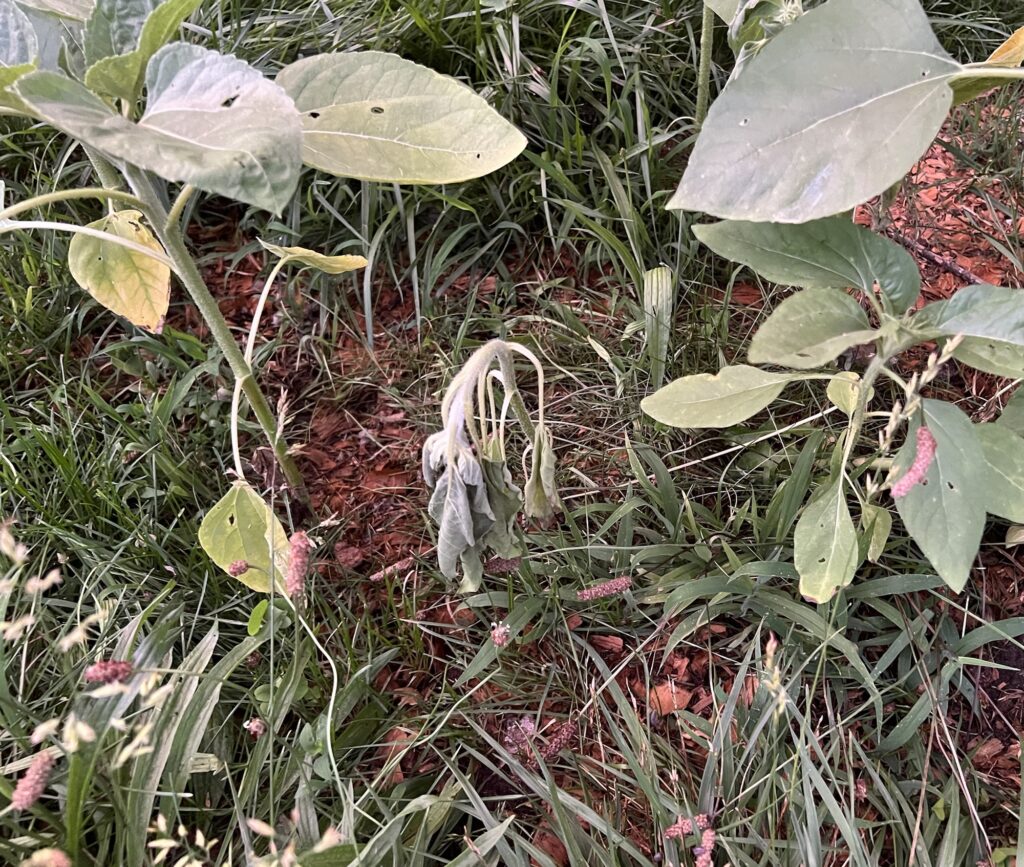
One of the most important issues to address, if needed, is adequate ventilation. An inadequately vented coop can become a veritable oven in hot weather, as well as a breeding ground for respiratory illnesses. Since our main flock lives in a pre-built barn-style shed, we had to retrofit it for our purpose – and adding substantial ventilation was key.
The first hot summer we had chickens, we thought that leaving the two windows in the coop open for a cross-breeze, along with the existing vents near the roof would be adequate. It wasn’t. We ended up dealing with chickens that were showing signs of heat stress; it was serious enough that we took the step of dunking the chickens in cold water (not their heads) to help cool them off. We realized that we needed to modify the ventilation immediately.
The coop needed more windows. We cut several openings around the coop so that more air movement could occur. Even with several more vents, the chickens still seemed too hot, especially in the evening. Clearly, we needed to do more work.
“Adequate ventilation” here meant swiss-cheesing the sides of the coop: there are multiple vents on each side of the coop, and we installed a wire mesh inner door so that we can leave the outer wooden door open. We also installed insulated panels in the ceiling of the coop to prevent the heat from the metal roof from radiating down into the coop.

Even with lots of airflow and the insulation, it is still hot in the coop at night because it’s hot outside. To help the ladies weather the heat, we ensure that they have plenty of fresh, clean water and we keep that water cool with frozen bottles. It’s also a way to repurpose empty two liter soda bottles.
We fill the bottles about 7/8 of the way (to allow for expansion as the water freezes) with tap water, then place them in our chest freezer. Each morning, a fresh, solidly-frozen bottle goes into the chickens’ 5-gallon nipple waterer, and the thawed bottle from the previous day is removed, rinsed, dried, and re-frozen.
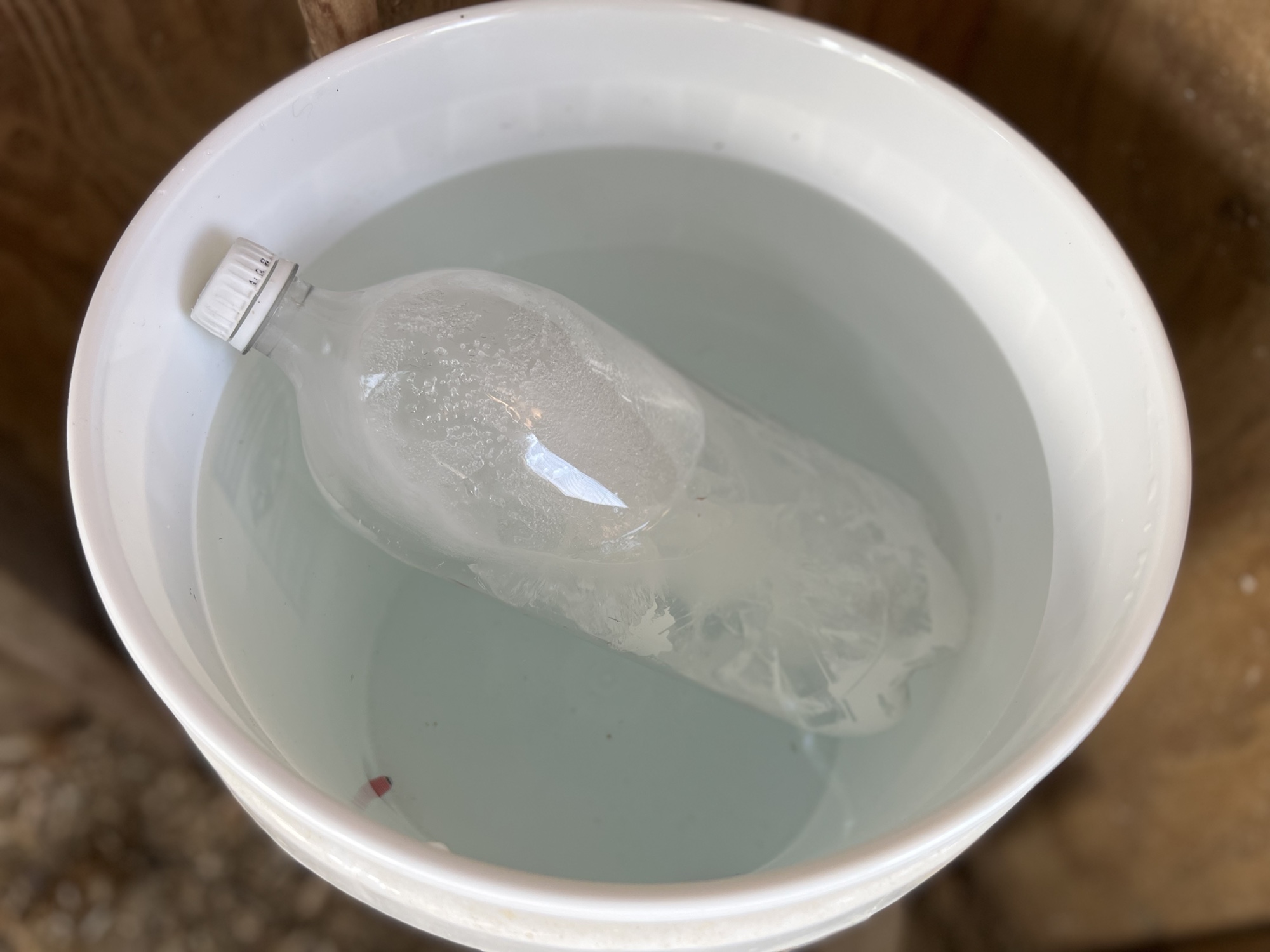
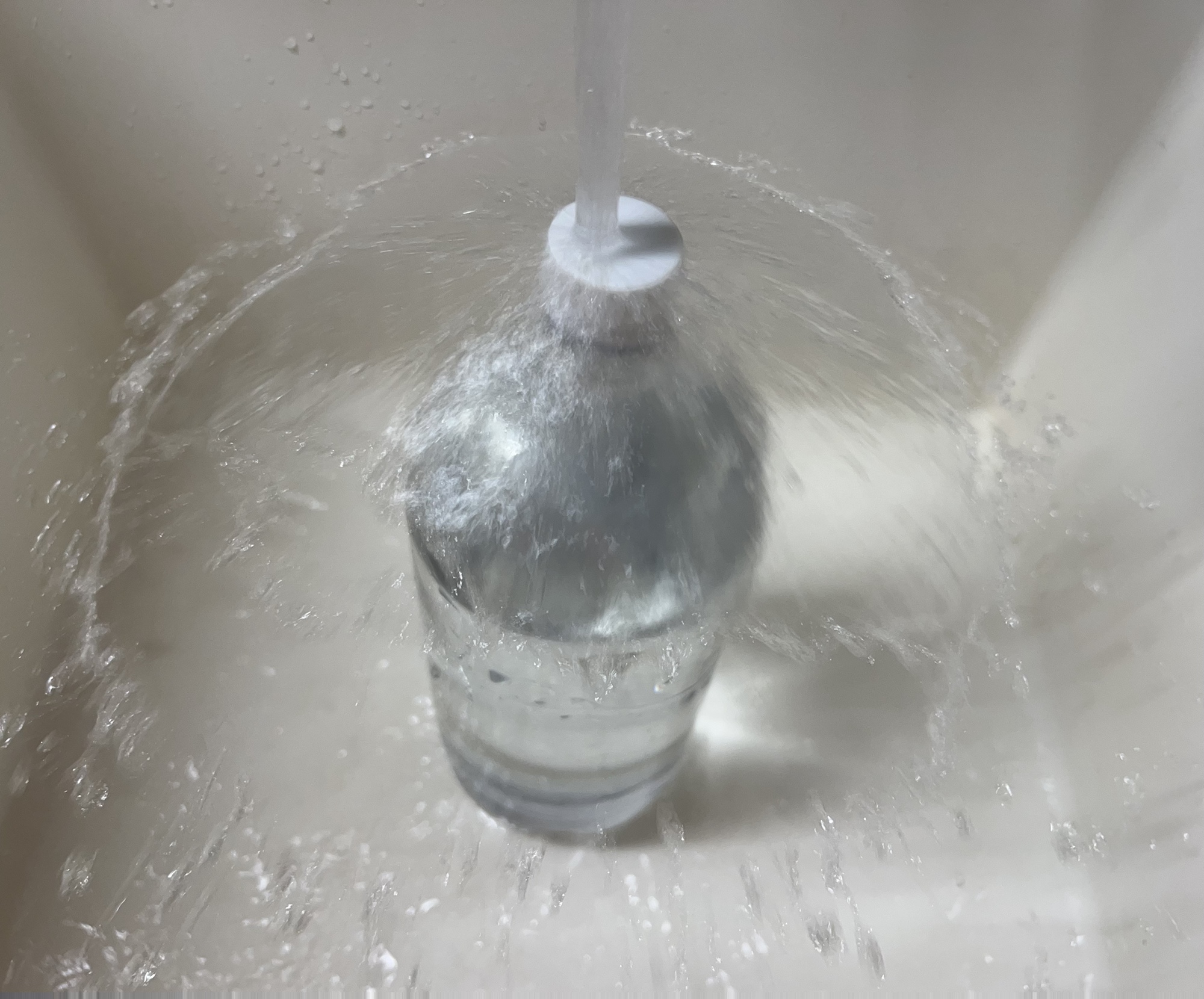
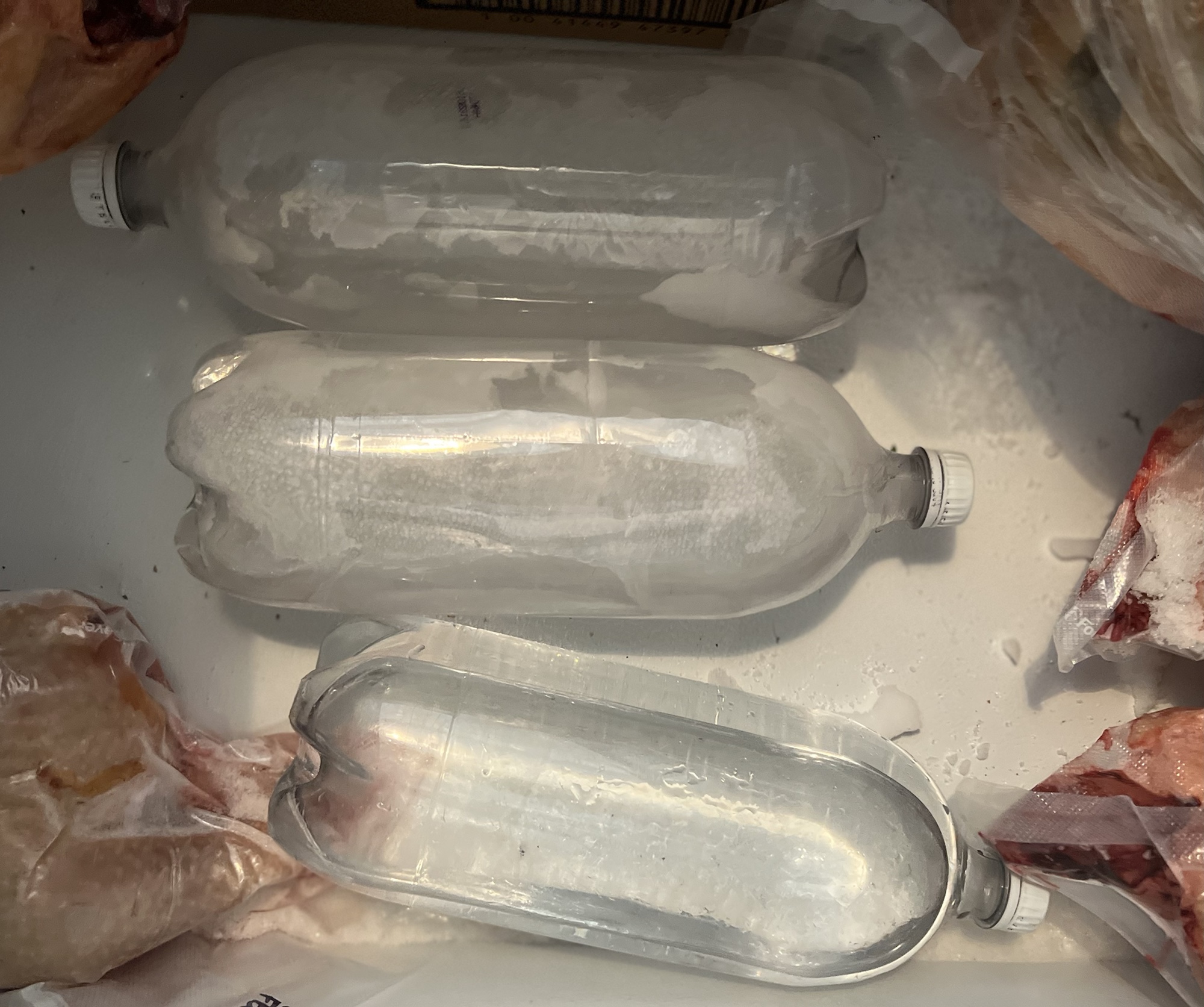
It’s easier than trying to buy and store bags of ice (who has that kind of room in their freezer? Not us!), and the frozen bottles can help keep the freezer cold in the event of a power failure. Keeping frozen bottles in the freezer may also help increase the efficiency of the freezer itself.
Note: we don’t use the water in the bottles for any purpose other than to create the ice that’s contained inside the bottle. Exposing plastic soda bottles to high or very low temperatures may cause chemicals to leach out of them into the water. A better choice than the PETE bottles would be HDPE, but I’ve yet to see a 2-liter HDPE bottle.
In addition to the frozen bottles, we’ve been adding a homemade electrolyte solution – made with ingredients we already have on hand – to the water to help keep the chickens healthy in the heat. We also use this solution to make our own “sports” drinks (really, rescue drinks) for when we’re overheated or dehydrated.
The poop board was splattered with very wet poop this morning – a sign that the flock has been drinking lots of water. We’re preparing to follow the same procedure of swapping out frozen bottles in their waterer (which also provides the perfect opportunity to check the water level and replenish, as needed) during the forecasted heat wave next week.
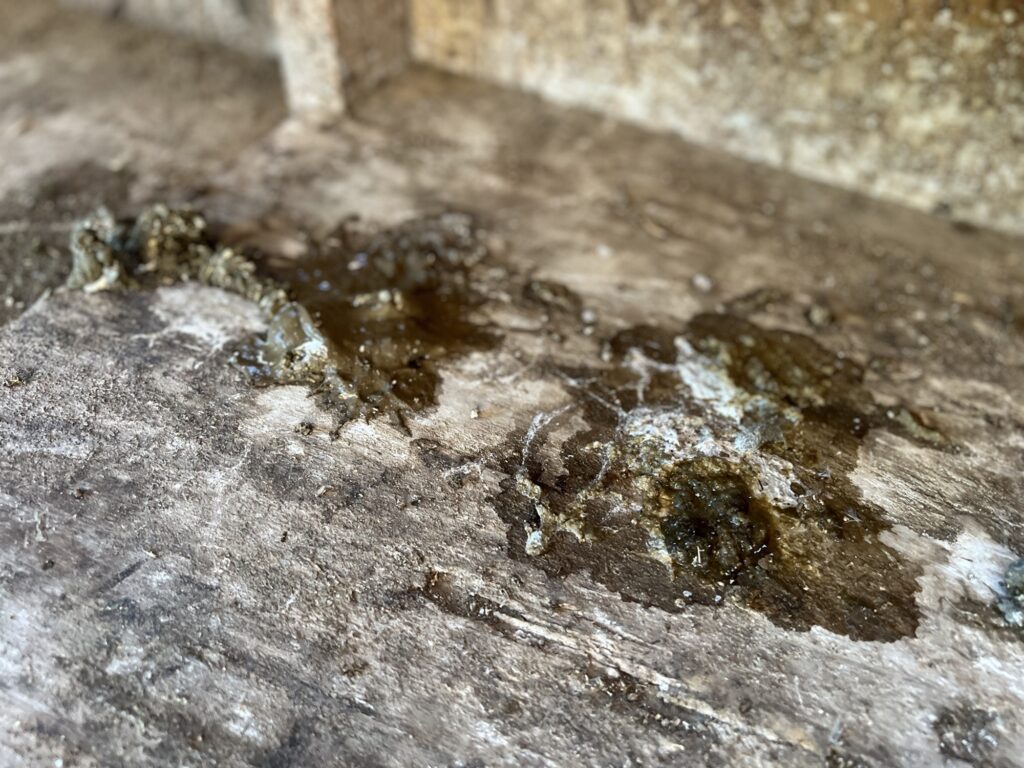
A break in the extreme heat is forecasted for the weekend. And it has turned out to be a beautiful Saturday – in the 70s and the humidity is low! Even the day lilies, looking terribly bleached by the sun just yesterday, look brighter and happier today! Unfortunately, another severe heat wave is forecasted to start again next week…and summer hasn’t even arrived, technically. As the world gets hotter, keeping our poultry alive becomes more difficult. We’ll be taking proactive measures to try to keep them healthy and as comfortable as we can.
